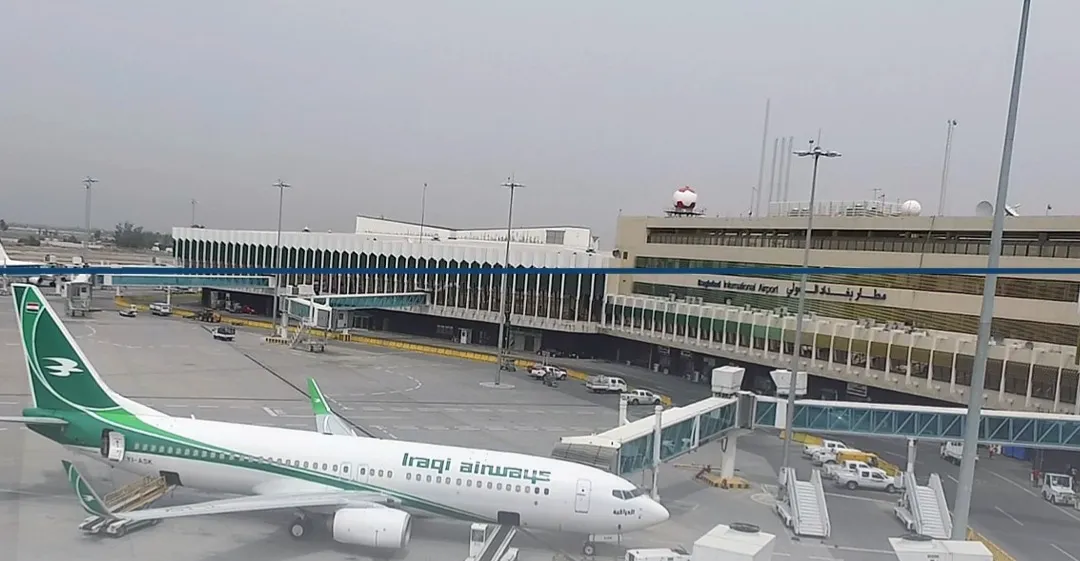An economic institution is contingent on the success of the Grand Faw Port project being enabled by the development of Iraqi airports.
 The Iraq Future Foundation for Economic Studies and Consultations on Friday linked the success of the Grand Faw Port project to strengthening Iraqi airports and increasing their air cargo capacity. Otherwise, the project will not be a major player in the region.
The Iraq Future Foundation for Economic Studies and Consultations on Friday linked the success of the Grand Faw Port project to strengthening Iraqi airports and increasing their air cargo capacity. Otherwise, the project will not be a major player in the region.
Commenting on the recent Iraqi Business Summit in Basra, held under the theme “Faw Port: Iraq’s Gateway to Investment,” the corporation’s chairman, Manar Al-Obaidi, published an article titled “Faw Port… and the Missing Opportunity Between the Airport and the Seaport.”
Al-Obaidi, who attended the summit, said, “The extent of the port’s infrastructure achievements, the modern facilities, and the implementation mechanism all reflect serious work that deserves praise.” He added, “However, what caught my attention before arriving at the port was my passage through Baghdad and Basra International Airports. These two airports are among the largest in the region in terms of the area allocated for air cargo, as they were originally designed to be platforms for re-export and transit operations, given their distinguished geographical location linking East and West.”
He added that the paradox becomes apparent when looking at the actual figures: the volume of air cargo at Baghdad Airport in 2023 did not exceed 21,000 tons, while Basra Airport recorded only about 5,000 tons.
Al-Obaidi also pointed out that, “In contrast, we find that the numbers in the Kurdistan Region and the world are completely different. Dubai International Airport recorded more than 2.2 million tons in 2024, Istanbul International Airport about 2 million tons, Abu Dhabi Airport about 700,000 tons, and Amman International Airport about 75,000 tons.” He added, “As for Erbil Airport, the volume of air freight reached 19,000 tons, and Sulaymaniyah Airport 3,000 tons.”
The Foundation’s Chairman stated, “This comparison reveals a significant gap between the ability to build infrastructure and the ability to operate it efficiently within a competitive and flexible system capable of seizing opportunities and understanding the true size of the market.”
He noted that “despite its well-equipped airports and integrated infrastructure, Iraq has been unable to compete with regional airports—and even its own local airports in Erbil and Sulaymaniyah—due to the lack of vision, mechanisms, objectives, and leadership capable of transforming potential into achievement.”
Al-Obaidi warned that “anyone who believes that Iraq will succeed in entering the East-West logistics market through infrastructure alone is delusional. Anyone who believes that the traditional government mentality is capable of competing with the region’s ports and airports is also delusional. Anyone who believes that the current bureaucracy can build real competitiveness is even more delusional.”
The head of the Iraq Future Foundation concluded, “If we want the port of Faw to become a major player in the region, we must first empower Iraq’s major airports to assume their natural role in the air transport and cargo system, rather than leaving the stage to small, limited-capacity airports to dominate this vital sector.”
Al-Abidi concluded his remarks by saying, “Big goals may look beautiful on the surface, but if they are not formulated with a comprehensive vision and an effective operational system, they will remain mere deferred dreams that will quickly fade with the first crisis we face.”
The Grand Faw Port is a strategic project in the far south of Iraq, located on the Faw Peninsula in Basra Governorate. It aims to transform the country into a regional trade hub by connecting it to global transportation networks.
The project costs approximately $4.6 billion and covers an area of 54 square kilometers.
Its annual capacity is expected to reach 99 million tons, making it one of the largest ports in the Arabian Gulf and the tenth largest in the world.
The port’s depth is expected to be 19 metres, to accommodate the largest commercial vessels.
In 2024, the concrete wall for the quays was completed, the piers were prepared, and work began on the container yard. Work is proceeding in parallel, with a focus on completing the last five projects simultaneously.
Shafaq.com
